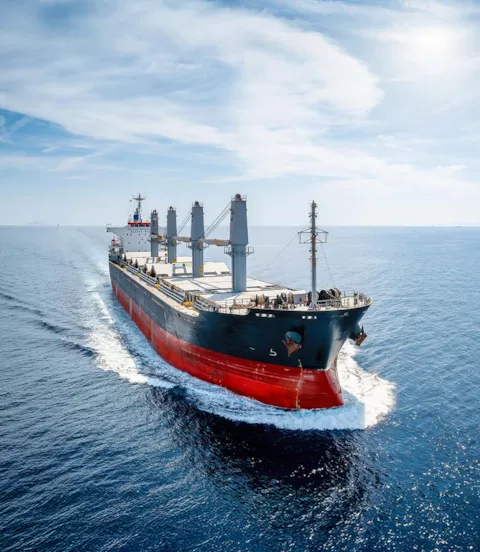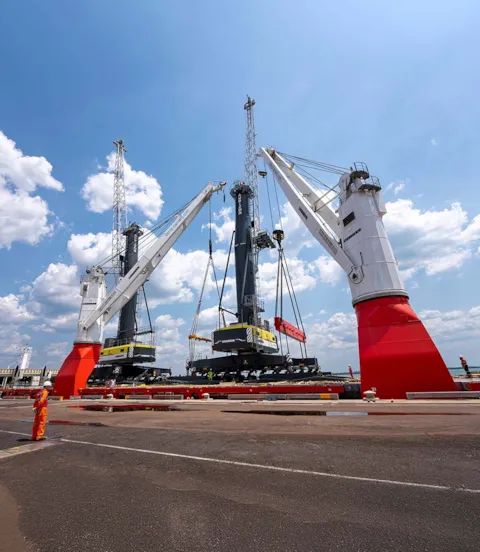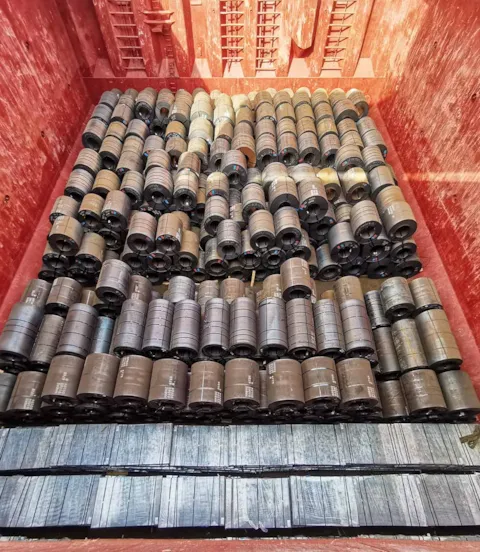How new rules and tools are reshaping bulk carrier safety and efficiency
The bulk carrier industry is evolving. New regulations, class notations, and digital tools are reshaping ship design and operations, enhancing safety, compliance, and efficiency across structure, crew, and cargo.
From a regulatory perspective, some key developments have been introduced or taken effect over the past year, all of which will serve to enhance the safety of bulk carrier operations.

ESP Code amendments tighten inspection rules and affect bulk carrier performance
In 2022, the ESP Code (the international code on the enhanced programme of inspections during surveys of bulk carriers and oil tankers) was amended and subsequently adopted by IMO Resolution MSC.525(106) and the IACS Unified Requirements.
Under the new requirements, which have been in force for surveys commenced on or after 1 July 2024, any coating condition rated below “GOOD” must be recorded and re-examined annually. For vessels over 20 years old and longer than 150 metres, annual inspections of double-skin void spaces are now mandatory if coatings are rated “POOR”.
This shift not only raises the bar for structural maintenance but also carries commercial implications. Downgrades in coating condition can lead to increased inspection demands, operational delays, and reduced charter appeal, making proactive hull management a competitive necessity.

SOLAS update enforces stricter rules for lifting appliances and onboard safety
Complementing this focus on structural integrity is the upcoming SOLAS Chapter II-1, Regulation 3-13, which introduces stricter oversight of lifting appliances. Effective from January 2026, all lifting appliances installed on or after this date must be surveyed and tested by a classification society. The regulations are now under the SOLAS safety regime, instead of the previous International Labour Organization (ILO) scheme.
Previously, inspections could be carried out by any “competent person”, but under SOLAS this is now stricter and under a more formalized process. This is in response to a rise in lifting-related accidents. For existing equipment, compliance is required by the first renewal survey after the regulation takes effect. Owners must now also implement structured maintenance and inspection regimes, maintain onboard records, and ensure crew are trained and familiar with the equipment. This regulation not only enhances safety but also reinforces accountability in onboard operations.

Grain Code update enables safer partial loading and greater flexibility
Meanwhile, the 2026 amendment to the Grain Code formally recognizes a common but previously non-compliant loading condition: partially filled holds in the way of the hatch opening, with untrimmed ends. This scenario often arises when vessels reach maximum draught before full hold capacity.
By acknowledging this practice and providing a framework for its safe execution, the amendment offers greater flexibility without compromising stability. For newbuilds, this condition must be included in the grain loading manual and implemented in the loading computer. For vessels already in service, updates are optional but may be necessary to meet port requirements.

Drone inspections and AI tools reshape bulk carrier survey practices
Technology is also playing a transformative role. Remote inspection techniques (RITs), particularly the use of drones for close-up surveys and ultrasonic thickness measurements, are gaining traction in the bulk carrier segment. DNV has been a pioneer in this space since 2015, and with the 2025 ESP Code update, drone-based inspections will be formally recognized. This development reduces the need for scaffolding, lowers costs, and improves safety, especially in hard-to-reach areas.
Looking ahead, DNV is exploring AI-driven defect recognition, autonomous drone navigation, and integration with digital twins through the REDHUS project. These innovations promise to make inspections faster, more accurate, and less intrusive.

Digital cargo tools boost steel coil loading speed, safety, and efficiency
Advancements in digitalization are also reshaping cargo operations. The Steel Load Planner, a self-service tool developed by DNV, enables operations teams to create rule-compliant steel coil loading plans – in the latest release this may be completed in less than five minutes. By replacing cumbersome tables and manual calculations with instant structural verification, the tool may improve cargo intake by 10–15% while also contributing to more efficient and, thus, more sustainable operations, and enhancing safety through precise load distribution. The upcoming Version 2, which will be launched later in 2025, will further streamline the process by auto-generating optimized plans based on coil data and vessel-specific structural capacity.
This service has already proven to be a significant success and is a prime example of how digital tools can bridge the gap between regulatory compliance and operational efficiency.

Deck cargo rules support transport of oversized components
The role of bulk carriers is constantly evolving, particularly as global markets develop and the need for new materials and components changes.
Most recently, this has seen increased demand for the transportation of non-standard cargo such as wind turbine blades, and other large industrial components. As these cargoes grow in size, weight, and complexity, traditional vessel designs and operational assumptions are being challenged. As a result, bulk carriers – particularly Ultramax and Kamsarmax types – are becoming increasingly favoured for the transport of these components due to their deck space and structural capacity.
DNV’s new deck cargo class notation reflects this evolving role, ensuring that vessels are not only structurally reinforced to handle these loads but also meet critical operational criteria. The notation sets specific requirements for the strength of the weather deck and hatch covers, including coamings and securing arrangements, while also addressing intact and damage stability and navigational field of vision.
These standards help shipowners demonstrate compliance with class and international regulations, streamline planning and approval processes, and reduce the risk of delays or disputes during port operations.

Regulatory shifts drive safer, smarter, and more adaptable bulker operations
Together, these developments are reinforcing the safety and reliability of bulker operations, helping bulker owners to stay in step with a fast-evolving maritime industry. With the regulatory environment expected to continue to develop, particularly related to the topic of decarbonization, the ability to adapt and be flexible, and stay on top of regulatory and technological developments will help bulker owners to make better-informed decisions and remain ahead of the curve.
- Shutterstock / Sven Hansche
- Nele Martensen
- Holger Martens
- Liebherr
- Eberhard Petzold
- Shutterstock / Paullawat